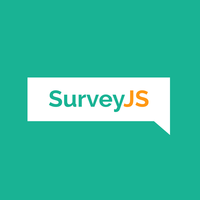Our great sponsors
-
SurveyJS
Open-Source JSON Form Builder to Create Dynamic Forms Right in Your App. With SurveyJS form UI libraries, you can build and style forms in a fully-integrated drag & drop form builder, render them in your JS app, and store form submission data in any backend, inc. PHP, ASP.NET Core, and Node.js.

-
WorkOS
The modern identity platform for B2B SaaS. The APIs are flexible and easy-to-use, supporting authentication, user identity, and complex enterprise features like SSO and SCIM provisioning.

-
p5.js-web-editor
The p5.js Editor is a website for creating p5.js sketches, with a focus on making coding accessible and inclusive for artists, designers, educators, beginners, and anyone else! You can create, share, or remix p5.js sketches without needing to download or configure anything.
The Microsoft Makecode editor allows you to switch between block and JS, which can help with this.
Obviously more embedded orientated but still an interesting idea.
https://makecode.microbit.org/#editor
The former. If you want text, other languages are available.
If you really want to use a keyboard, Tosh exists https://tosh.blob.codes/
If even using a keyboard is too much effort, I have a Python library for doing Scratch metaprogramming and code generation: https://github.com/davidBuchanan314/boiga
I've used it to write non-trivial Scratch programs, such as X25519 key exchange with ChaCha20-Poly1305 authenticated encryption https://scratch.mit.edu/projects/714773326/
At work [1], we've wanted to provide kids with cognitive and/or physical disabilities an introduction to coding fundamentals (sequences, loops, etc). As a result, we've created Weavly [2]. It's a React app that can work standalone, but also integrates with some off-the-shelf robots. It's free, open source [3], and accessible to people using screen readers, switches, and other assistive technologies.
[1] https://idrc.ocadu.ca/
[2] https://weavly.org/
[3] https://github.com/codelearncreate/c2lc-coding-environment
https://lobste.rs/ has an interesting mechanism to curb bots on the platform.
To join to website, you have to get a referral from another current user. And this referral is public information. So if someone you referred starts acting like an ass, then you can expect some concern being directed your way. People are rightly a bit cautious with giving out referrals as a consequence.
The topics on lobste.rs are more focused on programming and computers (stuff you'd likely also see on HN), and there's not really any political discussion. Traffic is light, expect maybe a dozen new links per day.
This comment, by the way, does not constitute an invitation to ask me for a referral. I don't really know too well anyone on HN, other than the most famous users (none of who know who I am), so if you ask me for a referral, the answer is very likely "no".
[I was an engineer at Scratch for 4 years]
The "what do we do after Scratch" question is tricky! There's no super clear answer (and a big market opportunity!)
It is important for people getting deeper into programming to learn a text-based language. But I do want to say that you don't need to stop using Scratch -- lots of adults use it, and it's really great for many things... e.g., this memory portrait of my mother sewing when I was young https://scratch.mit.edu/projects/646805603
Several comments here have hit on the visual UI as an element of Scratch that other languages don't have as readily.
Another element is the sharable context: you can make a Scratch project with others' enjoyment in mind; your project doesn't have to have another purpose besides being fun to play with.
So for moving on to other programming languages, I think the key is to identify compelling projects and to find (or build) small communities which will use those projects.
E.g.:
* sites like replit and Glitch and Github Pages and val.town where the whole idea is to make a small program (or piece of a program), publish it instantly, share it with others and remix others' programs
* making a choose your own adventure-style or Zork-style text game
* Advent of Code https://adventofcode.com provides a massive multiplayer experience where you know you're solving the same project as thousands of other people
As another commenter has said, I'd recommend Processing[0], a java-based language with a graphics library. One of the best ways to get into text-based programming languages.
The tutorials I would recommend are from the Coding Train youtube channel.
You can make tons of games and animations with this, I mostly used it for 2d games.
I have only tried it on high school 10th graders, it's worked pretty good for getting them into object oriented programmming.
[0] https://processing.org
Go to Scratch site (https://scratch.mit.edu/), create an account and show them how to connect blocks together to make the avatar move? Do it together and then check out other people’s works at the same site. You can build upon them.
You don’t need to buy anything.
I believe p5.js (used at https://editor.p5js.org/) is quite close to Scratch in spirit. Of course I think turning straight to javascript (the library really streamlines it) might be too difficult without instruction, so following some kind of tutorials or lessons would be necessary.
It's incredibly fun, and I've been making procedural... things for a while with it. Many artists use it (and of course every web tool is available... you can even later port the code to just straight canvas for the performance, although that's rarely necessary I guess).
See my little roguelike room generator: https://editor.p5js.org/gustavo.nramires/sketches/eyyxg7vl2
And a flower: https://editor.p5js.org/gustavo.nramires/sketches/hwhVUQu_X
i have a simplified programming language for kids. The language has it's own REPL/Shell and is more kind of text based.
https://github.com/MoserMichael/jscriptparse
Would like to get some feedback. (i think it's a swell little language)